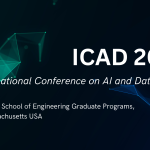Treefera was founded to solve one of supply chain’s toughest problems: understanding what happens at the first mile. With deep expertise in finance and risk modeling, Jonathan Horn built a platform that brings real-time, satellite-backed visibility to the origin of commodities, helping businesses monitor emissions, deforestation, and compliance at scale.
1.What inspired you to start Treefera, and what problem in climate or supply chain transparency were you most determined to solve?
Jonathan Horn: Treefera was born out of the urgent need for businesses to access transparent, reliable data required to make real-time, informed decisions on supply chain resilience. The first mile of the supply chain, the origin of commodities, has historically been the least understood and hardest to monitor, creating costly blind spots for businesses. These locations of origin are vital to the overall health of a supply chain, but they are also where the majority of vulnerabilities arise.
We set out to fix this by harnessing rafts of satellite, sensor and ground truth data to provide accurate, transparent and traceable insights on the first mile. Through our AI-enabled data fabric we are illuminating these blind spots, and doing so at unprecedented speed and scale.
2.Coming from a background in finance and analytics, how did your experience at J.P. Morgan shape Treefera’s product vision and risk modeling?
Jonathan Horn: My time at J.P. Morgan was foundational in shaping how I think about risk, precision, and decision-making at scale. In finance, especially in structured products and risk management, there’s no room for ambiguity. You need defensible, auditable, high-integrity data to make decisions that can withstand scrutiny from regulators, investors, and markets alike. That same standard – what we often refer to as financial-grade rigor – is exactly what we’ve applied to Treefera.
Supply chains, particularly in nature-based commodities, are some of the most complex and opaque systems in the world. Yet the risks embedded in them – carbon intensity, deforestation exposure, soil degradation, regulatory non-compliance – have material financial consequences. At Treefera, we saw a clear opportunity: bring the same quantitative discipline and modeling frameworks used in finance to the natural world. That means building a platform that doesn’t just observe, but that enables forecasting, pricing, and portfolio-level decision-making based on real-world environmental and carbon risk.
The core of our product vision is to make nature-based risk as measurable and manageable as financial risk. We do that by integrating satellite data, compliance frameworks, and proprietary AI models into a unified data fabric that delivers transparency with the speed, precision, and defensibility demanded by today’s capital markets. In short: Treefera translates environmental uncertainty into actionable intelligence – because if you can’t measure it, you can’t manage it.”
3.What were the biggest technical or market challenges in building a scalable AI platform for commodities and carbon tracking?
Jonathan Horn: One major challenge was transforming fragmented, disparate data – satellite imagery, field observations, compliance records – into one source of truth. We needed to build a platform that could handle this complexity while remaining intuitive and trustworthy for enterprise users. Data quality and accuracy, especially at the plot level, were a key focus for us as this is essential for making reliable decisions.
At the same time, we knew the traditional “always-on,” compute-heavy AI model ran counter to our decarbonisation mission. So we are pioneering a frugal, targeted approach to AI – one that’s decentralised, efficient, and designed to generate insights only when and where they’re needed.
Ultimately, the market needs defensible, financial-grade outputs. That’s what Treefera delivers: actionable intelligence that stands up to scrutiny, scales globally, and aligns with the carbon goals we’re all trying to meet.
4.How did you and Caroline Grey divide the early responsibilities of building Treefera—and what were some key moments in your Series A journey?
Jonathan Horn: In the early stages, Caroline and I naturally divided the responsibilities to leverage our strengths. Caroline took charge of the commercial side, focusing on customer growth and partnerships, while I focused on the technology and product development. This allowed us to move quickly in both areas without overlapping.
As with any start up there comes a time when you look to capital raises to both validate approach and secure resources for scale. Be that our original Seed raise, our Series A last year where we secured £12m in funding, or future raises – these are all moments which provided the resources needed to scale our operations. These have been turning points for the business, giving us the means to expand our team and accelerate product development.
5.Can you walk us through how Treefera’s data fabric integrates disparate datasets and delivers actionable sourcing and carbon insights?
Jonathan Horn: Treefera’s data fabric draws from a diverse range of datasets including satellite imagery, sensor data and land records from 1984 in some cases, providing businesses with a comprehensive view of their supply chains. By utilising adaptive AI, Treefera’s data fabric can analyse supply chains instantaneously. It provides previously unseen and unknown information on real world commodities, making blind spots visible and providing usable data down to the plot level – powering solutions for sourcing, risk, and compliance.
6.What sets your Scope 3 emissions monitoring and compliance alerts apart from existing sustainability platforms?
Jonathan Horn: What sets us apart is our unparalleled insight into the first mile — the origin point where commodities are grown, sourced, and refined, but also where the most significant environmental risks emerge. Unlike traditional sustainability platforms that focus on downstream data, we bring full transparency to upstream Scope 3 emissions — including carbon intensity, methane, biomass, and water management — allowing businesses to map, monitor, and act on their environmental impact with pinpoint accuracy.
This is especially critical in light of regulations like the EU Deforestation Regulation (EUDR), which requires detailed traceability and proof of deforestation-free supply chains. Our platform provides the defensible, geospatially anchored data companies need to stay compliant with EUDR and other evolving mandates, while driving decarbonisation.
The data-driven insights we deliver enable organizations to identify the top sources of Scope 3 emissions within the first mile, quantify their impact in real terms, and prioritise mitigation strategies. This level of granularity supports smarter, faster decision-making — helping businesses not only meet regulatory obligations, but also build more resilient, future-proof supply chains that benefit both their bottom line and the planet.
7.How do clients use Treefera’s platform in real-time to make sourcing decisions, manage risk, or meet new regulatory standards?
Jonathan Horn: Treefera’s platform equips clients with real-time visibility into legislative changes, monitor real world events, and evaluate commodity-specific compliance across jurisdictions. This level of insight into supply chains enables businesses to make highly informed decisions on managing risks effectively, planning logistical strategy, and facilitating timely intervention when the need arises and before irreparable revenue disruptions occur. As the compliance landscape becomes increasingly stringent, Treefera’s platform seamlessly integrates up-to-date cross-border regulations, empowering clients and ensuring confidence.
“For example, the new omnibus legislation proposed by the EU will see new sustainability assessments and incidence reporting mandated across certain businesses in Europe. Treefera’s platform could reduce the compliance burden on these businesses by enabling them to map and trace their supply chains, monitor their nature-based assets, and mitigate the risk of non-compliance with data insights and up-to-date legislative guidance.
8.Can you share a success story that illustrates how Treefera helped a client improve transparency or resilience at the first mile?
Jonathan Horn: Royal Family Farming, a multi-generational regenerative farming operation based in Royal City, Washington State, used Treefera’s platform to assist in decarbonising their operations and providing greater transparency into the food supply chain for their customers.
Before using Treefera’s platform, it took Royal Family Farming 2.5 years to register their methane avoidance project. However, by leveraging satellite imagery and AI-driven emissions monitoring, Treefera has helped Royal Family Farming reduce carbon emissions, increase carbon sequestration, and register their methane project in just 7 weeks – minting 50,000 carbon credits over the same period. Expediting these processes has delivered meaningful impact on Royal Family Farming’s business. They are able to sell their verifiable product at a more premium price to tier-1 buyers, positively impacting their bottom line and underscoring the ripple of benefits that regenerative agriculture can have.
9.What challenges have you faced while scaling Treefera, and how did you overcome them?
Jonathan Horn: Scaling Treefera meant building both a product and a category – often at the same time. One of our early challenges has been earning trust in a space crowded with overpromises, especially around carbon and sustainability. Many clients had been burned by black-box solutions. We responded by prioritizing transparency, defensibility, and scientific clarity in everything we build, grounding our insights in verifiable data and financial-grade rigor.
On the technical side, integrating massive, messy datasets, from satellite feeds to local land records, without compromising speed or accuracy requires us to rethink how AI systems should be built. We have shunned bloated, compute-intensive architectures from the get go and instead are building out fabric in a way that is responsive and frugal in alignment with our values.
Finally, hiring the right people has been critical. We’re operating at the intersection of science, AI, supply chain, SaaS products and data (no small feat!) so we’ve had to build a team fluent across disciplines and united by purpose. That alignment has been our greatest asset in navigating the complexity and pace of scale.
10.Looking back, are there any strategic decisions you would approach differently now?
Jonathan Horn: If anything, we underestimated just how quickly the market would move once people understood what Treefera could do. We always believed demand would be strong – but the pace and intensity have exceeded even our most ambitious forecasts. Clients are asking for capabilities we’ve mapped for 2026 and 2027 as if they needed them yesterday.
Our only real wish is that we’d had more of the product runway built out ahead of time. But from day one, we focused on precision – ensuring our platform was defensible, adaptable, and grounded in financial-grade rigor so that our clients get the most value from working with us. That foundation has enabled us to scale responsibly without cutting corners. Now it’s about accelerating that momentum and continuing to meet the market where it’s clearly headed.
11.What does success look like for you and Treefera in the next 5–10 years?
Jonathan Horn: Success, for us, means making transparency the default – not the exception – in global supply chains. In the next 5–10 years, I see Treefera firmly established as the go-to platform for building resilient, decarbonised supply chains. Our system will be delivering real-time, high-resolution insights into the environmental and social integrity of the first mile, across all major commodities – from timber and cocoa to soy and rubber and beyond. Ultimately, enabling the capital markets such as banks and funds to value these precious and scarce assets so all stakeholders can qualify the respective value.
Our platform will also embed regulatory compliance across frameworks like EUDR, CSRD, and CSDDD directly into the decision-making workflow. Rather than reacting to these evolving directives, our clients will operate in a mode of compliance by design – making smarter, faster decisions with confidence.
Crucially, Treefera will also serve as a trusted, verifiable data source for capital markets. By delivering defensible, financial-grade data on nature and carbon, we unlock the ability for capital to flow efficiently toward the right projects – those that are truly regenerative, climate-aligned, and impact-driven. In doing so, we help bridge the gap between ESG intent and execution.
And we’ll have done this with lean, intelligent infrastructure. Treefera’s adaptive AI will continue to lead in frugal, high-impact computing – proving that scale and environmental stewardship can be engineered into the same system from the start.
12.What does a typical day in your life as a founder look like, and how do you stay motivated?
Jonathan Horn: My days are a deliberate balance of pace and depth. I ensure that I’m reviewing key platform metrics and client feedback in real time which allows me to stay close to the product and people we serve. I enjoy working with our AI, engineering and science teams, diving into everything from frugal AI, model performance and new data integrations. These are often followed by strategic conversations with partners, industry experts and clients, where we can align on the broader mission of resilience and decarbonisation. I personally like to spend time reading & listening to podcasts – I find that provides me a continuous stream of inspiration and learning, which I try to incorporate as much as possible into helping our stakeholders.
What keeps me motivated is the knowledge that our work delivers impact at scale. Treefera’s insights aren’t just cutting emissions – they’re enabling entire industries to operate more sustainably and responsibly. Just as important, it’s the team around me. We’ve built a culture of sharp, mission-driven individuals who are guided by a shared commitment to developing a solution that truly benefits both business and planet.
Editor’s Note
Jonathan Horn is applying financial-grade discipline to climate intelligence. With Treefera, he’s turning opaque supply chains into transparent, measurable systems. This interview reveals how first-mile traceability is becoming a core business advantage in the age of carbon accountability.
Discover more interviews with AI founders on the AIPressRoom Interviews page.



